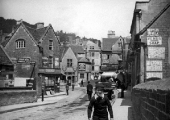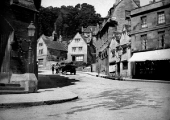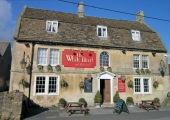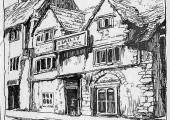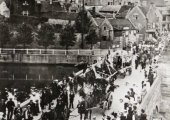.
Horses in Agriculture & Transport
Bradford on Avon Hundred area, Wiltshire
.
Until the coming of steam railway and traction engines and then motor vehicles -and even afterwards- horses were indispensable for all kinds of transport and in agriculture and war. Horses carried the Roman cavalry, the King and his retinue on their progress around the country, the Steward of the Abbess of Shaftesbury on visits to the Abbey’s properties, the Sheriff on tourns of Wiltshire, Royalist cavaliers, Methodist preachers like John Wesley on their circuits and judges on theirs. Horses hauled stage wagons to Bath, Trowbridge, Bristol and London and sometimes Bradford was connected by stage coaches as well and gentlemen kept their own horses and carriages. So, large areas were given over to the upkeep of horses as paddocks, stables and for growing their feed. Although much land is devoted to horses today, it is for recreation, not agriculture or transport.

Horses pulled delivery carts -this one carried bread from Penny’s bakery in Newtown- until the 1950s. The horse often knew the round and where to stop, allowing the delivery man to walk from house to house.

A covered wagon stopping outside a pub to feed a 3-horse team (and perhaps the driver inside the pub). This drawing was used by the Beavens’ leather factory in Holt and so the wagon was probably carrying skins for treatment or finished leather.
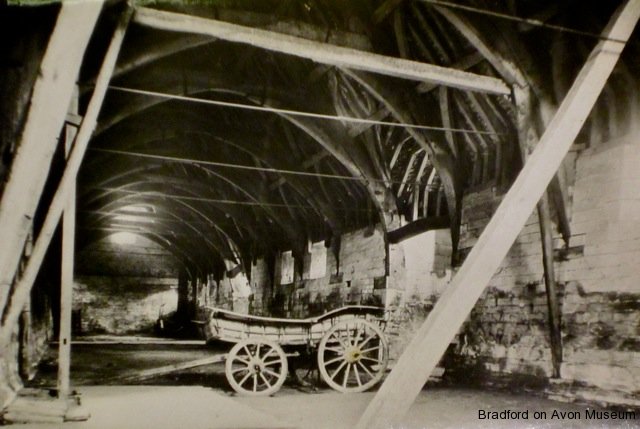
Horses had many uses on the farm, the heavy breeds for ploughing and lighter ones for hauling wagons and mowing machines for cutting hay and cereals. This wagon belonged to the Chard family at Barton Farm and was photographed in the Great Barn there.
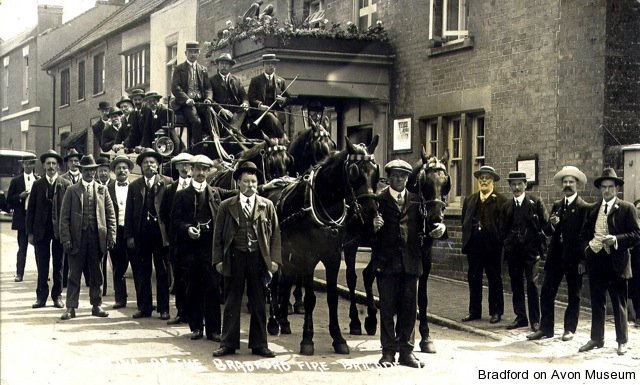
Four horses pulled Gerald Stamper’s charabanc on a Bradford firemen’s outing to Market Lavington before the First World War
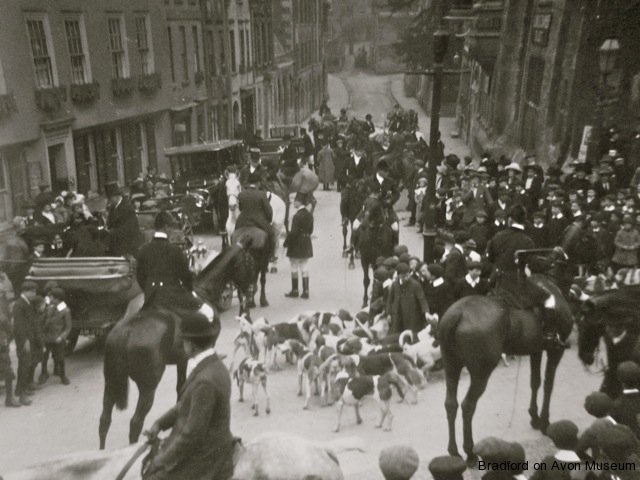
A meeting of a hunt (Beaufort or Avon Vale) in the centre of Bradford in the 1920s


